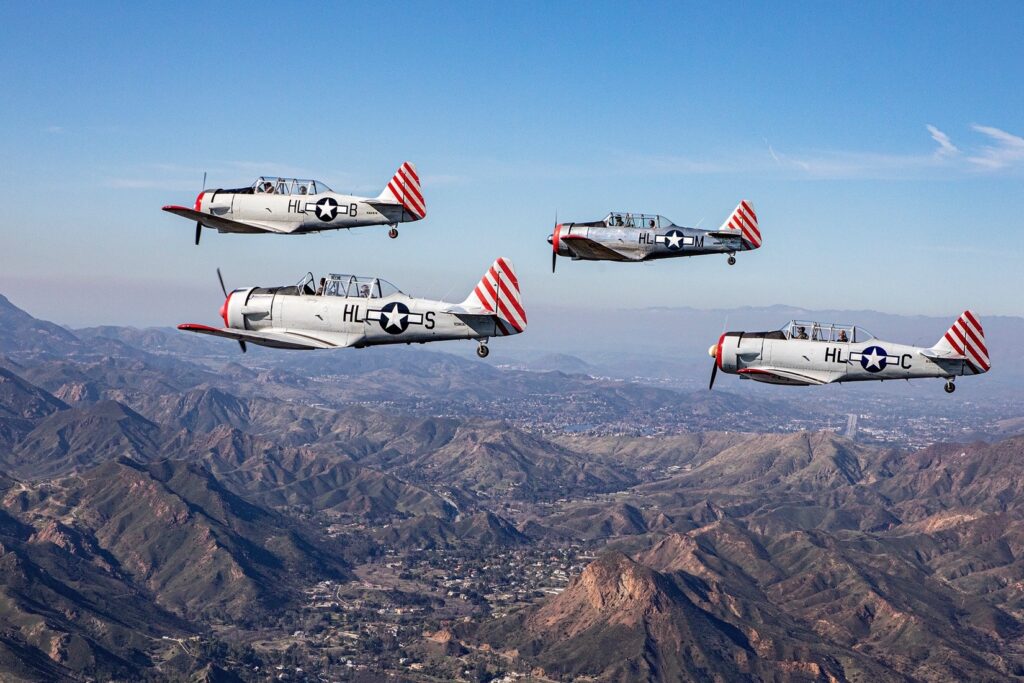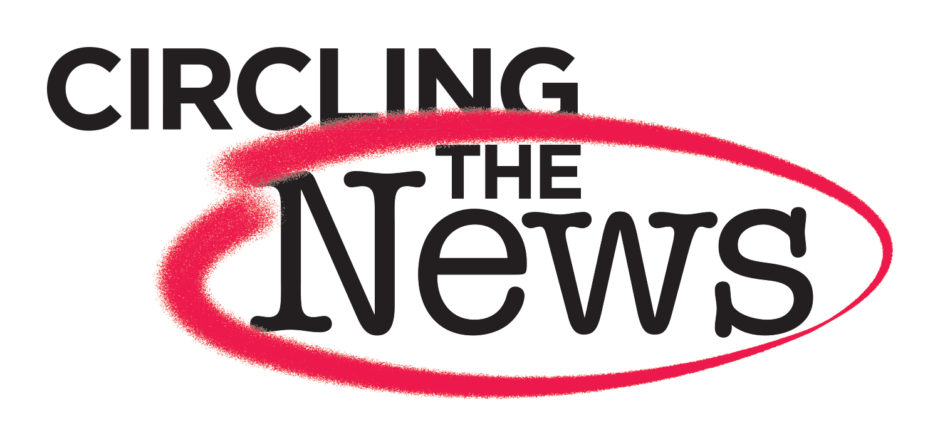(Editor’s note: This article is reprinted with permission from the Palisades Americanism Parade Association.)

World War II planes will fly over Pacific Palisades around 3 p.m. on July 4.
Photo: Courtesy Chris Rushing
By LAUREL BUSBY
Contributing Writer
For a second year, Palisadians can enjoy a Fourth of July flyover of WWII-era planes.
When the pandemic shutdowns hit last year, the Condor Squadron came to the rescue, conducting formation flights of the unique AT-6 airplanes back and forth over the town. Every family could stay home and still enjoy a Fourth of July treat with their fellow residents. This year, the popular flight is back.
The five pilots, led by the group’s president, Chris Rushing, will zigzag over Pacific Palisades with Sunset Boulevard as their guideline.
“Last year, it was really special that we got to do it,” Rushing said. “It worked out good for the pandemic. Again, this year, we want to give everybody the chance to see us.”
Sponsored by the Palisades Americanism Parade Association, the flight will occur at about 3 p.m. on July 4 and will go all the way to the ocean and over the Highlands. Rushing will be in the lead, and he will communicate to his squadron with numbered hand signals for line, diamond and fingertip formations. The name of the latter is inspired by the spread of one’s fingertips.
In normal times, the squadron conducts flyovers at a wide variety of events, ranging from funerals to parades, but the pandemic sidelined most events for the volunteer organization last year.
“There were no funerals,” Rushing said. “No parades. We were shut down for a year. We’re a nonprofit. We work for holidays and parades and stuff like this. We’re looking forward to getting going again.”
Already, this year the group has taken to the sky for Memorial Day events, and they have an array of plans for the Fourth of July, including beach city flyovers ending in San Clemente.
The pilots will include Eric Zine and Rob Sandberg, both Alaska Airlines pilots, and Will Tinsley and Dustin Gelbard, who work as corporate pilots. Rushing, a former Air Force mechanic who spent three decades in the California Air National Guard, owns his own plane, which he has twice piloted to wins at the annual National Air Races in Reno.
The Condor Squadron allocates about $700 per hour in operating expenses (gas, insurance, and maintenance) per plane to fly at events, Rushing said. Part of the club’s appeal is that its approximately 50 members get the chance to fly these historical planes.
“This airplane—it’s built somewhat peculiar,” Rushing said. “It’s real hard to land. You have to have real good pilot skills.” During WWII, the plane was used for formation pilot training, “and it made real good pilots. It was called the pilot maker.”
Some of the plane’s challenges, Rushing said, include narrow landing gear, a center of gravity that “kind of moves around,” and a single wheel under the tail, which requires special care on landing. For pilots with “tail wheel experience,” flying the plane comes fairly easily, but typically planes today have a single wheel under the nose, which requires a different landing strategy.
Rushing moved to California from Tennessee in 1987, and soon after he joined the Condor Squadron to connect with other pilots. The squadron was formed in 1962 by former World War II fighter pilot Richard Sykes and fellow veterans. Sykes, who was shot down over Hungary during the war but nevertheless returned safely home, has since died, but a new cadre of pilots has taken up the honor of sharing this plane and its history with the community.
Like Rushing, Sykes competed and triumphed in the T-6 category at Reno’s National Air Races. Success at the races requires making substantial changes to old planes. For example, Rushing, who started racing in 2005, had to install both a lighter frame and a faster engine. The changes meant that instead of traveling at a typical cruising speed of about 138 mph, he could reach highs of more than 240 mph.
“You can make modifications that make it more aerodynamic,” Rushing said, noting that the race features 15 airplanes flying five laps on a five-mile track over repeated heats. “The lighter the frame is, the faster it’s going to go.”
